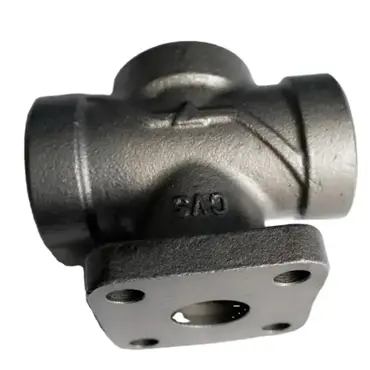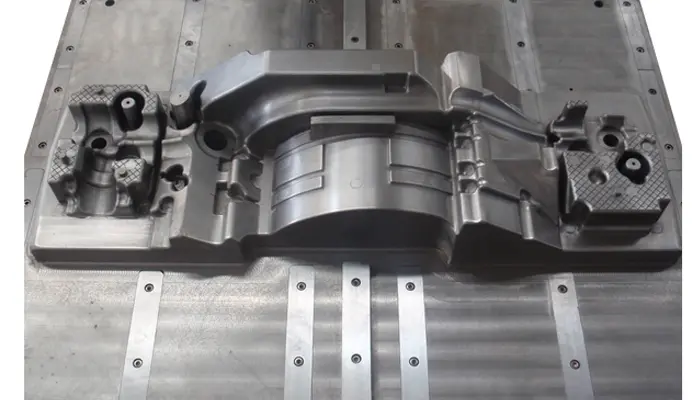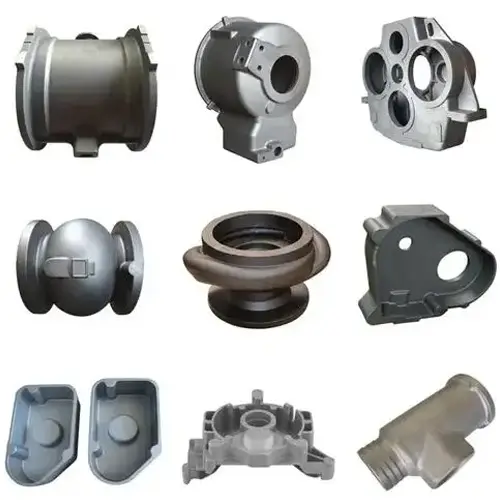QT700-2 casting material is a high-performance pearlite ductile iron material. It is widely used in machinery manufacturing, automobile industry, construction engineering, agricultural machinery and petrochemical industry due to its high strength, wear resistance and low toughness. It is suitable for parts with high strength requirements, such as crankshafts, camshafts, grinders, milling machines, lathe spindles, ball mill gear shafts, etc. of diesel and gasoline engines.
The main chemical composition of QT700-2 casting material includes: C 3.5~3.8% Si 2.2~2.5% Mn 0.4~0.6% P ≤0.045 % S ≤0.015% Cu0.6~0.8% Sn0.04~0.06%
Its mechanical properties are: tensile strength ≥700MPa yield strength ≥420MPa elongation ≥2% hardness: 225~305HB
1. Production process of QT700-2 casting material
The production process of QT700-2 casting mainly includes raw material preparation, smelting, spheroidizing treatment, inoculation treatment, pouring and other steps.
Raw material preparation: The main raw materials include pig iron, scrap steel, recycled materials and alloy elements. These raw materials need to be strictly screened and proportioned to ensure that the chemical composition of the casting meets the standard requirements.
Melting: Put the prepared raw materials into the melting furnace for melting. The melting temperature and time need to be controlled during the melting process to ensure that the chemical composition of the molten iron is uniform and pure.
Spheroidizing treatment: By adding a spheroidizing agent to the molten iron, the graphite in the molten iron is transformed from flake to spherical, thereby significantly improving the strength and toughness of the casting.
Inoculation treatment: Inoculation treatment is to add an inoculant to the molten iron to refine the graphite balls, increase the number of graphite balls, and further improve the spheroidization rate and mechanical properties of the casting.
Pouring: Pour the molten iron into a pre-prepared casting mold to form a casting.
2. Performance characteristics of QT700-2 casting material
2.1 Advantages
2.1.1 High strength: tensile strength ≥700MPa, which makes it very suitable for mechanical parts that bear high loads and stresses, such as crankshafts and camshafts of diesel and gasoline engines.
2.1.2 Good wear resistance: Due to the morphology and distribution of graphite inside the casting and the characteristics of the matrix structure, it has good wear resistance and is suitable for parts that need to withstand wear for a long time.
2.1.3 Moderate toughness: Although the toughness of QT700-2 castings may be lower than that of some other cast iron materials, its toughness is still sufficient to meet the needs of many industrial applications, especially in situations where high strength is required.
2.1.4 Good casting process performance: The castings can be modified through various heat treatments, such as normalizing, to adapt to different application requirements. In addition, its casting process is relatively mature and can produce castings with complex shapes and precise dimensions.
2.1.5 Wide range of applications: QT700-2 castings are widely used in many fields such as automobiles, machinery, and energy due to their excellent mechanical properties. They are the preferred material for many important mechanical parts.
2.2 Disadvantages
2.2.1 Brittle tendency: Compared with some materials with better toughness, QT700-2 castings may be more prone to fracture when subjected to impact or vibration. Therefore, special attention should be paid to its stress conditions and working environment during design.
2.2.2 High processing difficulty: The QT700-2 casting has increased processing difficulty due to its increased hardness and strength. During the cutting process, the tool wears faster and has a lower service life, so it is necessary to select appropriate tools and cutting parameters.
2.2.3 High cost: Since the production process of QT700-2 castings is relatively complex and requires the addition of expensive raw materials such as copper and tin, its production cost is relatively high. This limits its use in some low-cost applications to a certain extent. In summary, QT700-2 castings have the advantages of high strength, good wear resistance, and good casting process performance, but they also have disadvantages such as brittle tendency, high processing difficulty and high cost. When choosing to use QT700 castings, it is necessary to comprehensively consider its advantages and disadvantages as well as specific application requirements.
3. Application fields of QT700-2 casting materials
QT700-2 castings are widely used in many fields due to their excellent performance, as follows:
3.1 Automobile industry: castings can be used to manufacture automobile engine parts, such as crankshafts, connecting rods, etc., as well as generator gears, bushings, brakes and steering devices.
3.2 Machinery manufacturing: castings are often used to manufacture parts of heavy machinery and equipment, such as gears, bearing seats, connecting rods, etc., as well as high-strength bed and frame parts of machine tools.
3.3 Construction engineering: castings can be used to manufacture various building structures, such as bridges, stairs, handrails, guardrails, etc., as well as underground pipelines and bridge supports and other structural parts.
3.4 Agricultural machinery: castings can be used to manufacture key components such as plows, plow columns, differential cases, etc., to meet the use requirements of agricultural machinery in harsh working environments.
3.5 Petrochemical: castings can be used to manufacture linings, guide plates, pump bodies and other components of chemical equipment to ensure the stable operation of equipment in harsh environments.
In summary, as a high-performance ductile iron material, QT700-2 castings ensure the high quality of castings through strict raw material control, precise smelting and pouring processes, effective spheroidization and inoculation treatment, and standardized heat treatment processes during the production process. Its excellent properties such as high strength, high hardness, good toughness and wear resistance make QT700 castings widely used in many fields.
With the advancement of science and technology and the acceleration of industrialization, the demand for QT700-2 castings will continue to grow. In order to meet market demand, the production of castings in the future will pay more attention to technological innovation and process optimization to improve production efficiency and product quality. At the same time, with the enhancement of environmental awareness, green casting and sustainable development will become an important direction for casting production. Therefore, QT700-2 castings have broad prospects and important strategic significance in future development.
In addition, the application field of QT700-2 castings will continue to expand. With the continuous emergence of new technologies and new materials, QT700-2 castings will be more widely used in emerging fields such as new energy, aerospace, etc., providing strong support for the development of these fields.
In short, QT700-2 castings, as a high-performance ductile iron material, play an important role in industrial production. In the future, with the continuous advancement of technology and the continuous development of the market, the production and application of QT700-2 castings will usher in a broader development prospect.
If you want to know more, please feel free to contact us or leave a comment below. No matter what your company needs, our technicians can help you choose the most suitable solution.





